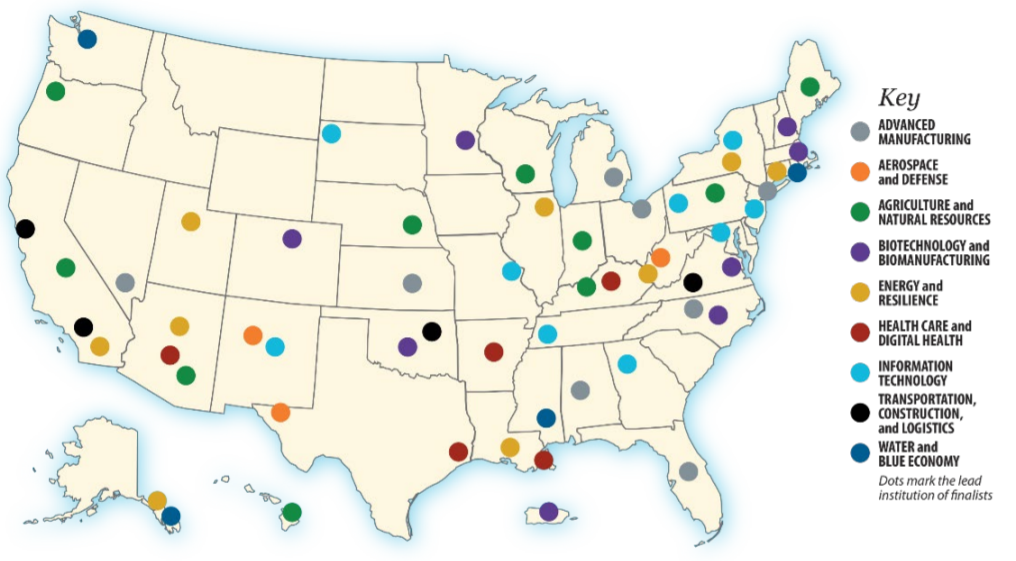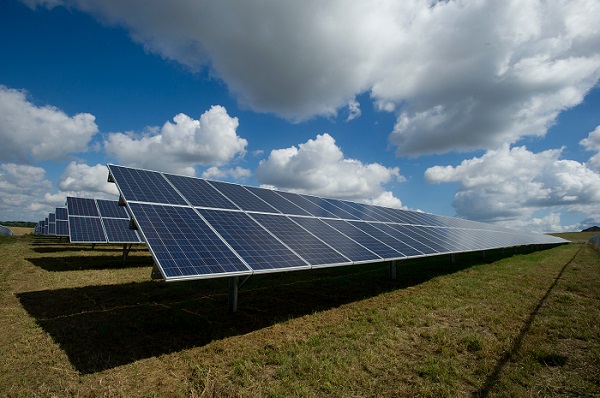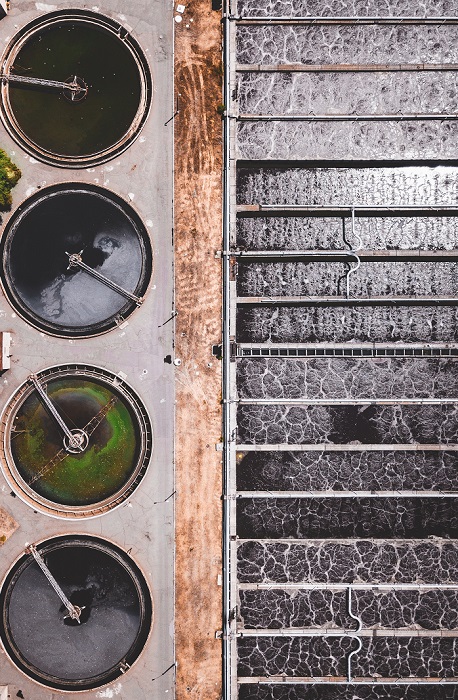Investments in infrastructure
A historic disaster recovery program will invest $1 billion to help communities identify and develop new industries through regional growth clusters. With the goal of spurring economic recovery during the COVID-19 pandemic and building resilient regions, the U.S. Department of Commerce’s Economic Development Administration opened the Build Back Better Regional Challenge in July 2021.
In late October, the Economic Development Administration announced that regions in all 50 states had submitted 529 applications for Phase 1 funding. On December 13, the Department of Commerce announced the 60 finalists that will each receive $500,000 technical assistance grants in the first phase of the program.
“These projects will help revitalize local economies and tackle our biggest challenges related to climate change, manufacturing, supply chains and more,” said Alejandra Castillo, Assistant Secretary of Commerce for Economic Development, in a news release.
Those 60 coalitions will be the finalists for awards in the second phase, where 20-30 groups will each receive $25 million to $75 million (and up to $100 million!) to implement their projects. Many of the initiatives developed in Phase 1 have the potential to transform a community.

The Build Back Better program has selected 60 finalists around the US for Phase 2 funding. (Source: EDA)
The City of Tucson and the Southern Arizona Coalition for Climate Adaptation and Resilience was awarded Phase 1 funding for a “cluster to drive sustainable agriculture, preserve water resources and develop clean energy.” One component of the plan calls for “expansion of infrastructure projects that promote the sustainable use of limited resources and the enablement of new climate adaptive technologies.” As an example of this, the coalition cited the transformation of Tucson’s landfill site into the Los Reales Sustainability Campus. A story in the Arizona Daily Star described how the city is “reimagining” its 1,200-acre landfill to include areas for economic development, recreation, more recycling, and even a tree nursery.
In California, the SoCal Tribal Accelerated Clean Energy Economy, led by the Pala Band of Mission Indians, was selected in Phase 1 for its Energy and Resilience proposal to establish a SCTACEE facility, develop a solar panel manufacturing plant, and establish tribally owned clean energy facilities. The group’s goal to demonstrate wireless charging for electric vehicles would “advance this new zero-emissions transportation technology while serving tribal clean energy, resilience, and economic development needs.”
In Maine, where the forest products sector represents $8 billion in annual economic benefits, a coalition was selected in Phase 1 for a project titled “Accelerating the Northern Forest Bioeconomy: Through Innovation, Commercialization, Workforce and Community Redevelopment.” The plan calls for redeveloping industrial sites such as closed mills, supporting innovations for the use of biomaterials, and the development of a new Green Engineering and Materials Laboratory.
According to the coalition’s proposal: “UMaine will develop a Factory of the Future facility (45k sf) to usher in a new era of AI-enabled large-scale bio-based additive manufacturing. GEM will house AI-enabled arrays of large-scale, 3D printers and sensors to manufacture and test new products from wood-derived cellulose and other advanced biomaterials, collaborate with industry, and train the next generation manufacturing workforce.”
Like those three examples, many of the successful Phase 1 coalitions have proposed new facilities and infrastructure as part of their plans, and IMS expects that architectural, engineering and consulting services will be needed in various stages of these ambitious projects. (IMS covers current RFPs on a daily basis and tracks future projects through Advance Notices for its A/E/C clients.)

A wide range of infrastructure projects are being considered for Build Back Better funding. (Source: American Public Power Association)
Prior to the Phase 1 submittals, IMS covered several RFPs for professional planning and management services for the Build Back Better Regional Challenge.
* The Northeast Ohio Areawide Coordinating Agency released an RFP in November 2021 to support the Build Back Better Regional Challenge by developing conceptual plans to guide the initial planning and development of coalition projects, as well as for a public participation plan (IMS 598885).
* The West Virginia Department of Economic Development released an RFP in December 2021 for technical, consulting, and grant writing services for the US EDA ARPA Build Back Better Regional Challenge grant and other potential grants, as well as program and project development, strategic planning, and project management for procedures for funding for efforts to increase economic development opportunities (IMS 602715).
More of these RFPs may be issued as Coalitions develop their plans for Phase 2. In fact, a few days after being selected in Phase 1, the Piedmont Triad Regional Council in North Carolina released an RFQ for a consultant to provide environmental, preliminary engineering, and cost estimating services to support its next submission for the SITE Next-Gen: A Piedmont Triad Cluster Strategy (IMS 604094).
The Piedmont Triad Regional Council’s plan has seven components, ranging from projects to support a National Hub for Regenerative Medicine Manufacturing to the next generation of furniture design and manufacturing. “These projects are highly feasible to complete by September 2027, and transformative to move the Triad beyond a long history of manufacturing strength to a new era of Next-Generation Manufacturing innovation focused on high-growth industries, high-paying jobs, resiliency, and equity,” the Council said. “By accelerating advances in equitable innovation and bringing new products to market, the Triad will bolster its resilience and address generational racial and geographic disparities.”

Key utilities, like water treatment, are among the myriad types of projects needed across the country. (Source: Ivan Bandura)
The Build Back Better Regional Challenge is the largest component of the Commerce Department’s “Investing in America’s Communities” program, which includes the Good Jobs Challenge ($500 million), Economic Adjustment Assistance Challenge ($500 million), Indigenous Communities Challenge ($100 million), Travel, Tourism, and Outdoor Recreation Grants ($750 million), and Statewide Planning, Research, and Networks Grants ($90 million).
This level of funding is not business as usual. “The EDA investment is the largest economic development initiative from the Department of Commerce in decades,” the Department said.
IMS is tracking several federal funding programs, such as the massive investments in water and sewer infrastructure, as the country recovers from the pandemic. This initiative, however, has a range of development projects and new facilities. For communities with big ideas, the Build Back Better Regional Challenge is an opportunity to find an area of competitive advantage, jumpstart an economy, and position a region for decades to come.

